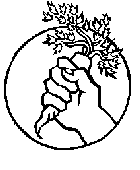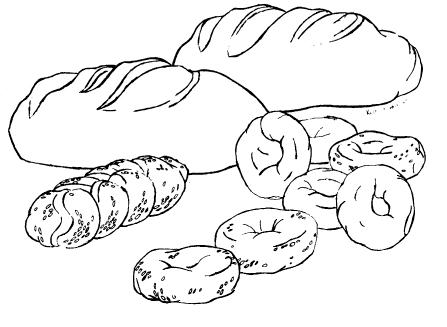
| Contents | Start | Previous | Next |
Over the years, Food Not Bombs has developed recipes specific to the food available and the number of people who need food but cannot pay for it. Some groups may find these recipes useful; others may want to invent their own, based on the food available and the need in their area. These recipes are a selection: some easy and others more challenging, some for events and others for street actions. All are inexpensive, feed a large number of people. and, if prepared with care, taste great.
The suggested number of servings for each recipe is based on a somewhat small serving, approximately 6 to 7 ounces. If you serve a larger portion, be sure to adjust the numbers accordingly.
The utensils we suggest are only the largest ones. Every recipe will need a sharp vegetable knife, a cutting board, assorted mixing bowls and spoons, and so on. If you do not have access to large cookware. the recipes can be cut in halves or quarters, and several crews can operate simultaneously and produce the same volume. It is possible to feed four thousand people with four two-burner propane stoves and a hose for running water.
The times given for prep work and cooking are for experienced cooks. If it is your first time with a recipe, then you can expect to take twice the time suggested. The prep time is also for one person, and can usually be shortened with more people.
All quantities are to taste. Use enough oil to cover the bottom of the pot. Spices are light, so if your community likes food spicy, increase the amounts. Keep the salt light; use a small amount, as it changes the chemistry of the recipe. Let people salt and pepper their own portion. Use more of the main ingredients if you have them or if you can afford them.
The following recipes are based on the kinds of food you are likely to receive from your free food collection. These recipes are easy to prepare for beginners and are vegetarian, with no dairy eggs, or meat. Remember, always try to collect organic produce whenever possible.
The easiest items to prepare for serving are bread and pastries. After collecting day-olds and seconds from local bakeries, place the cut loaves in a large, clear plastic container with lid. Attach a set of tongs to the container with wire or string. (Utensils are easily lost, so tying them down is desirable.) Tongs are used so that people do not handle the bread with their hands.
You will usually collect a large amount and wide variety of fresh, raw
vegetables. Most of these raw vegetables can be served as they are after
a simple rinse. Many soup kitchens do not offer fresh vegetables at their
meals, so they are greatly appreciated by people on the street. Be
sure to have them available in abundance.

| Contents | Start | Previous | Next |